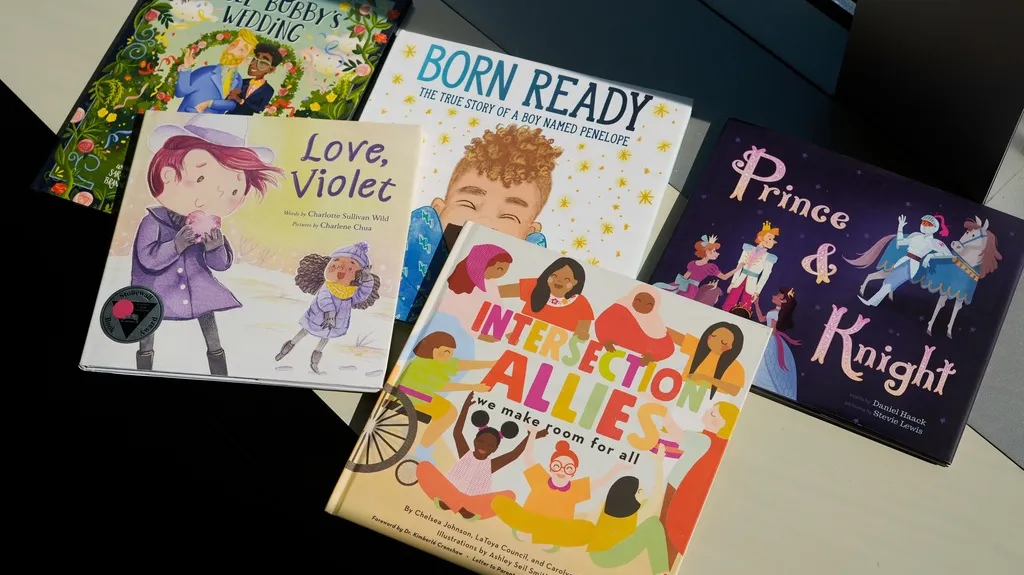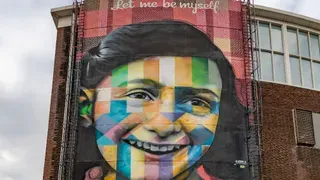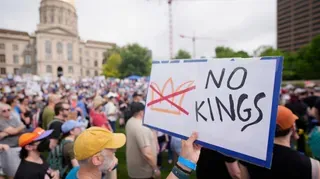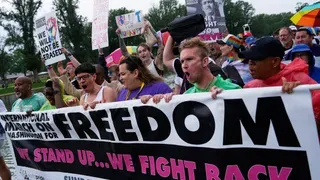October 9, 2013
2013: LGBT's Biggest Year So far
Kilian Melloy READ TIME: 7 MIN.
As years go, 2013's destiny is to be remembered as an LGBT-history heavyweight - even more so than 2012, the year when the five branches of the U.S. military began allowing lesbian, gay and bisexual Americans to serve openly for the first time in their history. This decision many believe ushered in the landmark process to come, effectively setting the stage for the judicial branch's decisions.
This year the Supreme Court of the United States narrowly landed a powerful, one-two punch directly upon the faces of homophobia, hatred and bigotry by striking down two of the most onerous pieces of law this nation had abided since the decades when Jim Crow segregation was firmly embedded throughout local, state and federal statutes. Changing the legal destinies of LGBT individuals, couples and families throughout the country for now and the future to come.
In 2013, more Americans than ever are aware of the LGBT struggle for equality and that October is earmarked as LGBT History Month. As we embark on this special year's observations and celebrations of our history, many in our community are doing more than ever to ensure that some of the under appreciated milestones of LGBT history are recognized by Americans today and in perpetuity.
Equality Forum is one organization that has been working to stamp out apathy and forgetfulness in the LGBT and larger communities as well. Malcolm Lazin, executive director of Equality Forum, recently told The Rage Monthly that there was a time when LGBT History Month itself risked becoming a footnote. "While Gay History Month was launched in the mid-1990s, no one took responsibility," he said. "In 2006, Equality Forum organized LGBT History Month with a free website featuring 31 'icons,' one for each day in October."
In fact, Equality Forum's "Icons" project has come to define October as LGBT History Month in the gay mediasphere and beyond. "The project has been hugely successful," Lazin said. "In 2006, there were twenty organizations that had an LGBT History Month link on their site. In 2012 that number mushroomed to more than 1,000 organizations. In 2006, we had 100,000 hits. In 2012, the project generated more than 65 million media impressions." According to "Icons" supporters, another group stands poised to further increase the level of LGBT history appreciation by several powers of magnitude.
The Velvet Foundation was launched in 2007 by Tim Gold, a former researcher for the Smithsonian Institution, with a mission to open the National LGBT Museum alongside some of his former employer's pinnacle museums in Washington D.C. "LGBTs don't currently have a presence in D.C.," Gold said. "With the numbers of people who come to the capital to learn about American culture and history, we saw the need to have a presence the way other minority groups do."
According to Gold, one of the best ways for any minority group to tell its story on the national stage, is with a national museum in D.C. "If a minority group wants its story told, it needs to be the one to tell it," Gold said. "That's especially true when you're talking about a group as diverse as ours."
Gold credits the Smithsonian Institute's museums, especially the National Museum of American History, for attempting to represent lesbian, gay, bisexual and transgender Americans by curating temporary exhibits and including some representations of LGBT Americans in their permanent collections. "The Smithsonian tried through portraiture with the Hide/Seek exhibit at the portrait gallery inside the American History Museum in 2010 and 2011," he said. "But even that was controversial for its sparse portrayals. I support their efforts and every mainstream museum's efforts, to acknowledge LGBT-American history, art and culture."
But, says Gold, it is time for a substantial, permanent, diverse and dedicated National LGBT Museum. "We're now in our third phase," Gold told The Rage Monthly. "That means we're looking at a property - a construction site - as well as what the building itself will be; what it will look like; and what it must do."
One of the things Gold is determined to have the design of the building "do" is to make passing by without being compelled to explore its history, art, culture and installations nearly impossible using the property's architectural appeal. In fact, paraphrasing Gold, if he and his design team succeed in achieving that goal, even the most strident foe of LGBT equality will want to come inside the National LGBT Museum.
"There are a couple of things that keep me awake at night," Gold says, "One of those is worrying that we've forgotten an aspect or a group or an individual part of our history - of our entire LGBT community." The other unexpected thing that keeps him awake, is figuring out how to blend the need to welcome and respectfully accommodate both LGBT and non-LGBT families within a museum dedicated to a sexual minority, while honoring the edgier parts of our past and present.
"It's true: The leather and drag communities and the others with provocative viewpoints are important in the story of the LGBT-American experience," he continues. "At the same time, it's been a revelation as our leadership committees have learned that there is a demand for us to make families with children feel safe and welcome at the museum."
In the end, says Gold, there may only be one solution. "We're probably going to have to add about 10,000 more square feet for a 'family wing,' " he said. Although Gold is not yet ready to disclose the exact size he expects the museum will be, it is likely it will be constructed to approximately 100,000 square feet. He's even more shy about cost, but mentions $70-80 million as reasonable figures.
"We're a community of now," Gold said. "We're activists and we want it now. I've had people say, 'Why isn't this museum up yet?' " When he hears questions like that, Gold takes a breath and recommits to what he calls "planning a national museum the right way. Even though everyone wants this museum now, because this is 'our time,' you have to get it right the first time - period," he continues. "We want families to feel welcomed, but we can't shut out the more provocative members of our community. We have to get this right." Nevertheless, Gold expects to break ground on the National LGBT Museum sometime in the next year to 18 months.
We asked both Tim Gold and Equality Forum's Malcolm Lazin for two of their favorite icons, past or present. Interestingly, both men's lists contain two LGBT people they hope will be remembered during LGBT History Month, including openly gay civil rights activist Bayard Rustin (1912-1987). Rustin organized the 1964 March on Washington and was considered a "right hand" to the Reverend Dr. Martin Luther King.
On his list of two LGBT History Month favorite icons, Lazin also included Alan Turing (1912-1954), an English mathematician and scientist credited with defining the concepts of "algorithm" and "computation." Turing was prosecuted for his homosexuality in 1952 and "chemically castrated" as an alternative to looming incarceration - leading, some say, to his untimely death in 1954. Prime Minister Gordon Brown offered an apology in 2009 for the brilliant scientist's "appalling" treatment and a pardon eventually came from the House of Lords in 2013 - 61 years later. According to Wikipedia, the Turing Machine is considered the first model for a modern computer.
On another part of the famous LGBT achievers spectrum, Tim Gold points to Olympic diving champion Greg Louganis. "It's easy to forget how amazingly brave he was," Gold said. "Young people today are surprised to hear that after he hit his head on the diving board, the pool was drained because there was blood and he was HIV-positive. They were told, 'But you can't get HIV from a pool.' We've come a long way since then, and I think that's partially due to his courage." Louganis recently donated his collection of diving memorabilia and Olympic medals to the National LGBT Museum project.
Sadly, 2013 also marked the passing of Jos� Sarria, the first openly gay candidate to run for public office in the U.S. He ran for a seat on the San Francisco Board of Supervisors, the same one that Harvey Milk famously won after trying three times. Sarria, unknown to most, came very close to winning a seat on the board of supervisors a full decade-and-a-half earlier than Milk.
Sarria was founder of the Imperial Court system, which has been called the "Elks Lodge of the gay community" because of its vast array of charitable and civil rights endeavors for and on behalf of the LGBT community worldwide. Also this year, Sarria's chief eulogizer at a funeral fit for a head of state and heir to the throne of the International Imperial Court system, Nicole Murray Ramirez of San Diego, was named honorary mayor of Hillcrest - the city's historically LGBT neighborhood.
History is the perspective that tells us who we are, where we come from and can be a guide for the future of our diverse LGBT community. It's being made every moment of every day by those involved in policy on the national level and by the everyday heroes fighting for our right to exist and flourish. This year's Supreme Court victory brings historic change and reason to enjoy the fruits of those labors - but the work continues...
For more information on Equality Forum and the LGBT History Month's "Icons" project go to equalityforum.com.
If you are interested in support and involvement with the National LGBT Museum in Washington D.C., you can find out more at nationallgbtmuseum.org
Kilian Melloy serves as EDGE Media Network's Associate Arts Editor and Staff Contributor. His professional memberships include the National Lesbian & Gay Journalists Association, the Boston Online Film Critics Association, The Gay and Lesbian Entertainment Critics Association, and the Boston Theater Critics Association's Elliot Norton Awards Committee.





